Reduce Returns & FAQs With Fit Finder Tools
Help your users buy with confidence and reduce returns by helping them choose the right size the first time.

Oops! We could not locate your form.
Help your users buy with confidence and reduce returns by helping them choose the right size the first time.

We’ve all ordered items of clothing online and they’ve simply not fitted upon arrival.
To counter this you end up ordering a size larger and a size smaller, hoping one will fit and you’ll send the others back – right?
If you’ve ordered from different brands, this is where it can go even more horribly wrong.
A size M in one brand will swamp you like a wizard’s sleeve, whilst an M from another will make you feel like you’ve packed on weight. Yet this size from another brand fits you perfectly as you’re wearing it right now.
Quite simply, different brands make their products in different sizes for different customer types. A small in one brand might be tall but narrow, whereas in another it might be short and wide. There are international differences to take into account and different fit styles.
Finding the right fit is a challenge when you are not shopping in a physical store. Doing this online often results in your ordering multiples and sending the others back.
This can be great for the customer, but not so much for the retailer, who might pay for the collection and return delivery, along with repackaging for resale.
Yes, Carrie, you’ll be pleased to know there is.

Fit Finder is a tool that is used by a number of online clothing stores to help customers understand which of their products and sizes will fit them the best. This is based on a range of data, including age, height, body shape and ideal fit preference (I personally hate anything baggy).
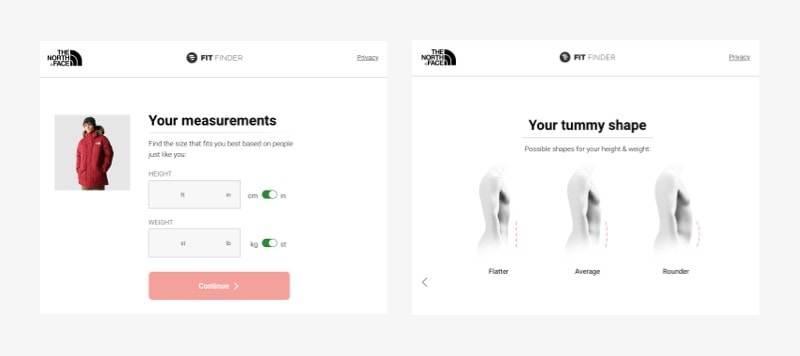
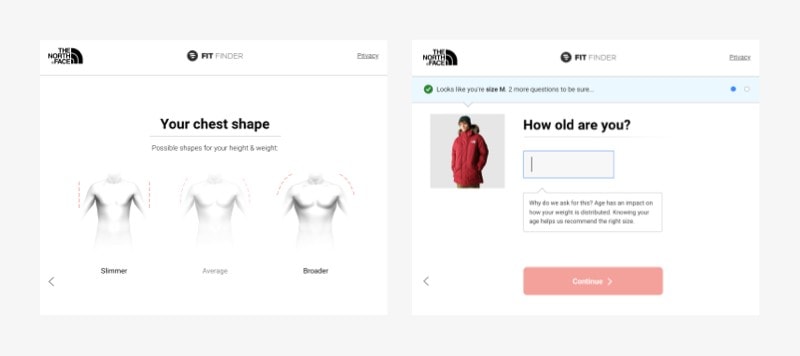
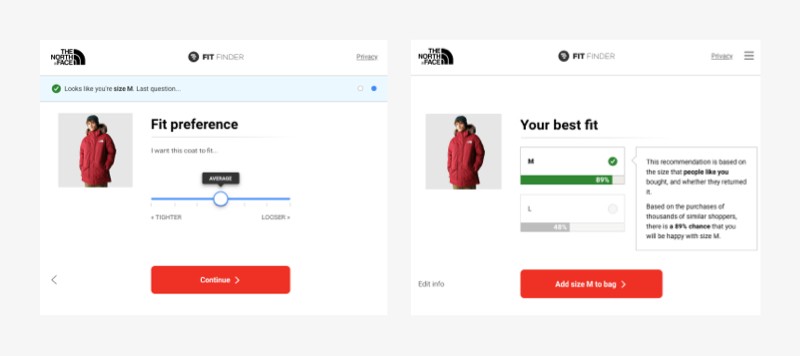
By following the 5 steps in the Fit Finder tool, you can quickly learn which size of the product or brand you are viewing is likely to fit you and your body type best.
So if you are on The North Face and you’ve never shopped with them before, you can understand how their products come up size-wise, without needing to order 3 of the same item in a range of sizes and having to arrange the returns and wait for your refund.
If you’re selling various collections from different brands and are wondering if it can still work for you, then yes it can.
It uses your age to display commonly purchased brands by users in your demographic, so you can select brands where you already know which sizes fit you well. It can then use this information to recommend what products you might like, and what sizes in the brands they sell are most likely to fit you.
Levi’s may make products similar to Ben Sherman and so on.
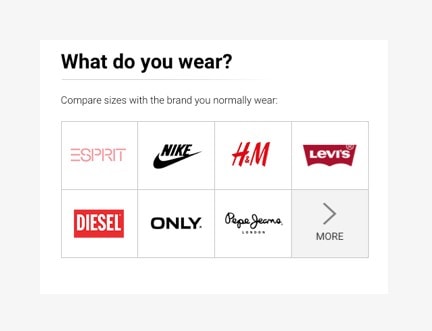
As with any platform with rising popularity, there are always competitors. One of Fit Finder’s rivals is True Fit. They offer a very similar product, however, one of the key differences is that you can create a profile and save it. You can then use the same profile on any other websites that use True Fit. Saving you time when shopping on other clothing websites.
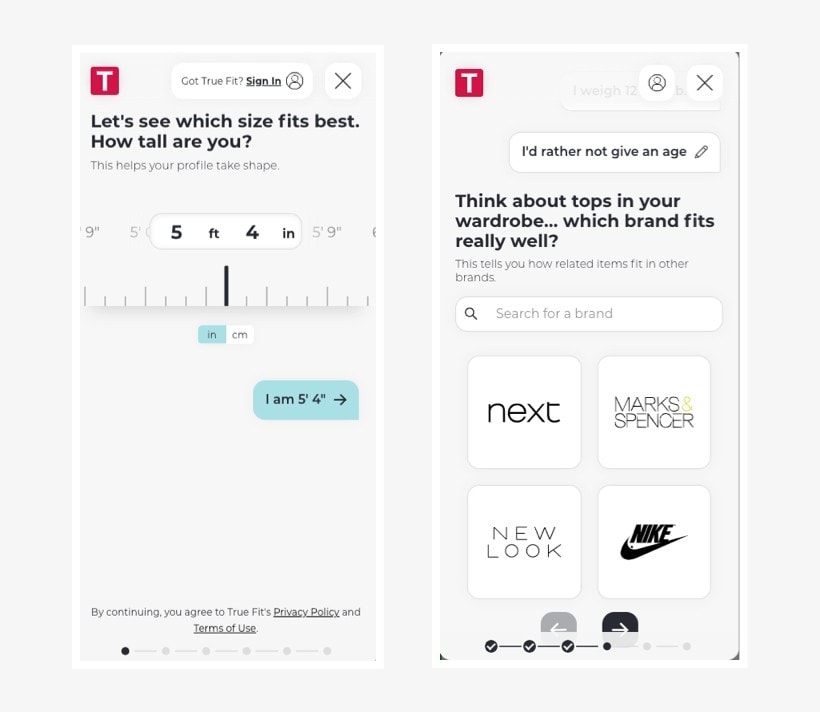
Today’s key takeaway is that if you’re running an online clothing store and are struggling with the cost, time and environmental issues that arise from arranging item returns due to fit issues, then exploring either of these options might excite you.
These are embedded tools as opposed to deeper integrations, so from the development side timings for implementation should be minimal. However, if you do only sell one brand, and your sizes are consistent, then implementing a similar questionnaire without using these 3rd party solutions could serve you well.
Ultimately anything that makes buying from you easier is a win. Enabling customers to understand how your products will fit them, removes doubt and worry, making it easier to buy. This is regardless of the solution you choose to use.
That’s a wrap for Swipe & Deploy #37. Join me next week when I’ll share another insight or piece of inspiration from around the web.


Whether you are visiting a theme park, zoo or any other type of visitor attraction, there's usually some form of map that customers can download from the attraction's website, that details how they can get around on the day.
 James Coates
James Coates

Whether you're in the 'it's ok to put up your decorations in November' camp or strongly feel that 'December is the date for Christmas decorations', your website is another place that can be decorated with festive touches. If you want to start in November, we won't judge!
 James Coates
James Coates
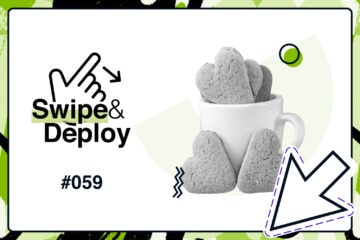
For publishers and websites that rely on advertisement money to support their commercial income, browser AdBlockers, privacy specialist browsers and rejecting Cookie Consent issues can cause an absolute nightmare.
 James Coates
James Coates